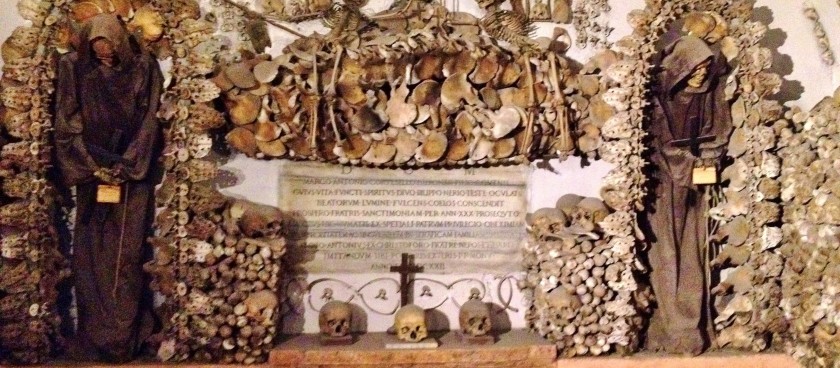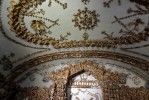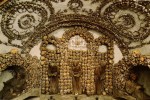- #IT20
- Via Veneto 27, Roma 00187
- +390688803695
- segreteria@cappucciniviaveneto.it
- http://www.cappucciniviaveneto.it/
- Working hours*:
9.00- 19.00
Last entrance 18.30 - Prices*:
Adults: €8.50;
Children under 18
and seniors over 65: €5.00 - * - opening and closing times as well as entrance prices, are subject to alterations without notice. Visitors are advised to check before visiting.
- 41.9049670, 12.4885340 Copy to clipboard Copy
-
#Catacombs , #History , #Museums
Inside the Museum and Crypt of the Capuchin Friars (Museo e Cripta dei Frati Cappuccini) you'll find several small rooms adorned from floor to ceiling with the intact and dismembered skeletons of approximately 4,000 monks who died between 1528 and 1870. Though the premise seems eerie and macabre, it is also a surprisingly beautiful and peaceful experience in the Eternal City.
History of the Capuchin Crypt
The Capuchin Friars were members of the larger Franciscan order of monks. The religious sect, founded in the 16th century, got its name from the hood or capuche attached to their habits (the cappuccino was also named for the friar's espresso-colored robes.)
In the middle of the 17th century, the Capuchin friary of Rome's St. Bonaventure was moved to Santa Maria della Concezione. The Pope's brother commanded that the friars bring all their belongings to their new digs. This included the bones of their dearly departed compatriots – so they could all spend eternity together in one place.
Friar Michael of Bergamo, the first overseer of the newly located ossuary, took to systematically arranging the bones in artful displays. The tradition continued after his death and as new friars died, long-buried corpses were exhumed in order to make room for the newly deceased. The exhumed skeleton parts were then added to the decorative motifs.
What To Do and See at the Crypt
A visit to the Capuchin Crypt includes the museum of the Capuchin order, which offers an in-depth – and somewhat exhaustive – history of the brothers and their mission work across the world. A highlight of the museum is a painting of Saint Francis in meditation, attributed to none other than Caravaggio.
There are six small chambers within the crypt:
Crypt of the Leg Bones and Thigh Bones: The type of bones that you'll find lining the walls of this room may not be surprising, but the severed, crossed arms that make up the Capuchin's coat of arms might be.
Crypt of the Pelvises: Skeletons dressed in their hooded friar's frocks are suspended from the walls and surrounded by butterfly-shaped pelvic bones.
Crypt of the Resurrection: This chamber's highlight has to be the painting depicting Jesus raising Lazarus from the dead, framed by — you guessed it — a lot of bones.
Crypt of the Skulls: Named for the hundreds, and possibly thousands, of skulls that decorate this space.
Crypt of the Three Skeletons: Containing mummified, robed figures amidst thousands of bones, on the ceiling is a small, bony figure holding a scythe in one hand and a scale in the other. A plaque reads, “What you are now we used to be; what we are now you will be.” It's a reminder of the cycle of life, and that we are all quite mortal.
The Mass Chapel: Used to celebrate Mass, this is the only place in the crypt without bones. It does, however, contain a relic (the heart of Maria Felice Peretti, the niece of Pope Sixtus V) and the tomb of the Papal Zouaves, defenders of the Church at the battle of Porta Pia.


